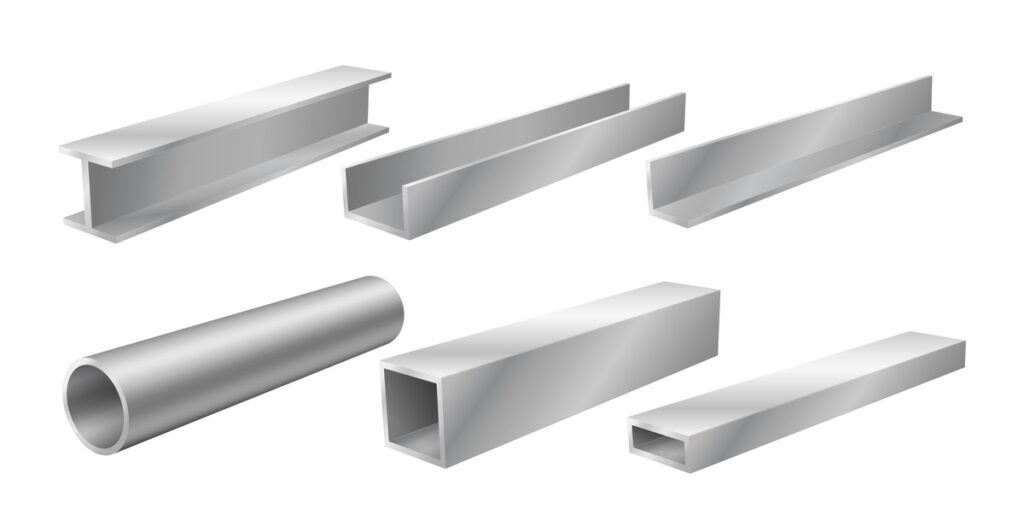I-beams have been a staple in construction for decades, and their reliability is unmatched. Their distinct shape, resembling a capital “I,” allows them to bear heavy loads without bending under pressure. This efficiency has made them a top choice for projects where structural integrity is non-negotiable.
The design of I-beams distributes weight evenly, making them perfect for supporting multi-story buildings and bridges. Unlike solid rectangular beams, I-beams require less material to achieve the same strength, reducing both cost and environmental impact. Engineers have improved I-beams with lightweight, high-strength alloys that maximize durability without increasing weight.
In 2025, the demand for stronger materials is greater than ever due to urban expansion, climate change, and the need for sustainable construction. I-beams meet these challenges with solutions that withstand extreme weather, earthquakes, and heavy traffic loads. Their ability to maintain strength while using fewer resources makes them essential for modern engineering.
Surprising Places Where I-Beams Are Used
Holding Up Skyscrapers with Minimal Materials
I-beams are often associated with large commercial buildings and bridges, but they are also essential in less obvious structures. One of their most significant contributions is supporting skyscrapers while minimizing material use. The tallest buildings in the world rely on I-beams to provide both vertical and horizontal support, making them stable despite their height.
Making Bridges That Last for Generations
Bridges benefit from I-beams due to their ability to bear heavy loads while remaining lightweight. This ensures that bridges last for decades with minimal maintenance. Some of the most durable bridges today are built with I-beams that resist rust, weather damage, and constant vehicle pressure.
Supporting Homes Without Heavy Concrete Walls
In residential construction, I-beams are becoming more popular as architects move away from traditional concrete walls. Homes with open floor plans rely on I-beams to create large, unobstructed spaces while maintaining stability. This allows for modern designs with expansive windows and fewer support columns.
Helping Factories and Warehouses Stay Open and Spacious
Factories and warehouses depend on I-beams for their construction. These buildings require wide, open spaces for storage and machinery, and I-beams make it possible to build massive structures without excessive support pillars. Their use in industrial settings ensures that space is maximized while keeping construction costs reasonable.
Innovative Ways Engineers Use I-Beams in 2025
Creating Earthquake-Resistant Buildings
As technology advances, engineers are finding new ways to utilize I-beams beyond traditional applications. One of the most significant developments is their role in earthquake-resistant buildings. In high-risk areas, flexible I-beam designs absorb seismic energy, preventing structural collapse. This innovation is saving lives and reducing rebuilding costs after disasters.
Building Modular Homes Faster Than Ever
Modular housing is another area where I-beams are making a big impact. Prefabricated homes are built off-site using I-beams, allowing for quick assembly and reduced waste. These homes are not only faster to construct but also more affordable and customizable, making them a popular choice for modern housing solutions.
Designing Futuristic Stadiums and Arenas
Stadiums and arenas benefit from I-beams, which allow architects to create sweeping, open spaces with massive roofs and seating areas. These structures need to support thousands of people while maintaining a visually impressive design, and I-beams provide the perfect balance of strength and flexibility.
Expanding Underground Structures Without Weakening the Surface
Underground structures, such as subways, parking garages, and tunnels, also rely on I-beams. Their ability to support tons of weight while preventing ground shifts ensures stability beneath the surface. Engineers use I-beams to build underground structures that are safe, durable, and resistant to environmental factors.
Key Takeaway
I-beams continue to be essential in construction and engineering, offering strength, efficiency, and versatility. Their ability to support skyscrapers, bridges, homes, factories, and warehouses makes them valuable in both large-scale and residential projects. Modern advancements have made I-beams even more reliable, with new materials improving their durability and sustainability. Engineers are also using I-beams in innovative ways, from earthquake-resistant structures to modular housing and underground projects. As construction evolves, I-beams remain at the forefront, proving that their design is not only timeless but also essential for the future of building and infrastructure.






